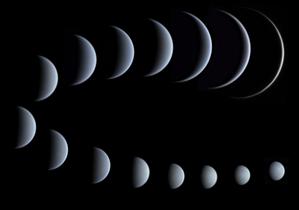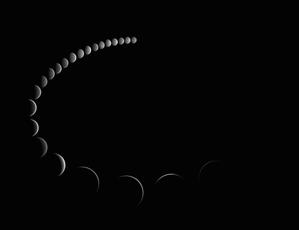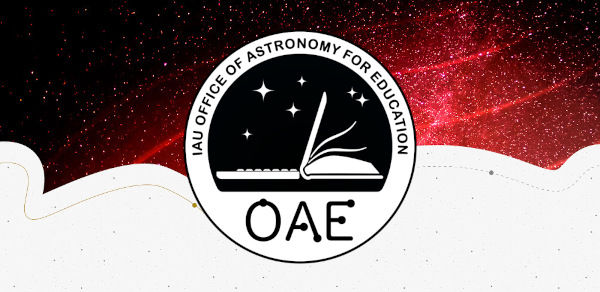Glossary term: Phase
Description: In astronomy, phase refers to the state of partial illumination of a moon or planet with respect to a specific observer. A distant light source typically illuminates only half of a spherical body's surface; the rest remains dark. Similarly, only about half of a spherical body's surface is within a distant observer's sight. The phase specifies which fraction of the surface within the observer's sight is illuminated. It changes as the relative positions of the object, the observer, and the light source change.
The best-known examples are the phases of the Moon. The relative positions of the Moon, of the Earth as the location of the observer, and of the Sun as the light source, change as the Moon orbits the Earth over the course of about one month. Hence, over that time, an observer on Earth will see different phases of the Moon. The phase where all of the Moon's surface that is in the observer's sight is illuminated is called "full Moon"; when no illuminated surface regions are visible, we have "new Moon". The two half-illuminated phases are called "first" or "second quarter", respectively. Less-than-half illumination makes for a "crescent (Moon)".
Phases are also seen in planets in the Solar System (particularly prominent for Mercury and Venus), and have been inferred for exoplanet systems. For the Moon, even non-illuminated regions are not completely dark: they reflect light reaching them from Earth, in a phenomenon known as Earthshine, first documented by Leonardo da Vinci.
Related Terms:
See this term in other languages
Term and definition status: This term and its definition have been approved by a research astronomer and a teacher
The OAE Multilingual Glossary is a project of the IAU Office of Astronomy for Education (OAE) in collaboration with the IAU Office of Astronomy Outreach (OAO). The terms and definitions were chosen, written and reviewed by a collective effort from the OAE, the OAE Centers and Nodes, the OAE National Astronomy Education Coordinators (NAECs) and other volunteers. You can find a full list of credits here. All glossary terms and their definitions are released under a Creative Commons CC BY-4.0 license and should be credited to "IAU OAE".
Related Media
A Matter of Perspective
Credit: Christofer Baez/IAU OAE (CC BY 4.0)
License: CC-BY-4.0 Creative Commons Attribution 4.0 International (CC BY 4.0) icons
Phases of Venus
Credit: Stephane Gonzales/IAU OAE (CC BY 4.0)
License: CC-BY-4.0 Creative Commons Attribution 4.0 International (CC BY 4.0) icons
Venus and Mercury Trails
Credit: Marcella Giulia Pace (CC BY 4.0)
License: CC-BY-4.0 Creative Commons Attribution 4.0 International (CC BY 4.0) icons











